Essential Abilities Every Modern Web Developer Should Master
1. Proficiency in Programming Languages

JavaScript
remains the most important Web Developer Skills, especially in global tech hubs like San Francisco, where interactive and dynamic applications are in high demand.Node.js
developers to use JavaScript for server-side programming, enabling full-stack development with a single language. Knowledge of Node.js, along with frameworks like Express.js, enables developers to build scalable and high-performance web applications on the server-side.Python
python is another popular programming language for web development. With frameworks like Django and Flask, developers can build powerful and scalable web applications quickly and efficiently. Beyond web development, Python is also widely used in data analysis, machine learning, and artificial intelligence, making it a versatile and valuable Web Developer Skills for 2025 and beyond.2. Soft Skills
Effective communication, problem-solving, and the ability to work well in a team are essential soft skills for web developers. As development projects become more collaborative and interdisciplinary, the ability to communicate ideas clearly and collaborate with designers, marketers, and other stakeholders is becoming increasingly important.Communication as a Core Web Developer Skills
Effective communication skills are essential for web developers to communicate ideas, requirements, and solutions to team members, clients, and other stakeholders. This includes written communication (e.g., emails, documentation, reports) and verbal communication (e.g., meetings, presentations, discussions).Problem-Solving in Modern Web Developer Skills
for those working in tech-driven cities like Bangalore, where developers frequently face complex coding challenges and high-performance demands. It involves analyzing problems, identifying root causes, and creating effective solutions. From debugging code to troubleshooting technical issues, problem-solving pushes developers to think creatively and deliver innovative outcomes in fast-paced digital environments.Teamwork and Collaboration in Web Developer Skills
The ability to work well in a team is essential for web developers to collaborate effectively with designers, marketers, project managers, and other stakeholders. This includes sharing ideas, providing feedback, resolving conflicts, and working together to achieve common goals.Time Management for Productive Web Developer Skills
to prioritize tasks, meet deadlines, and manage their workload effectively. This includes setting goals, planning projects, estimating time and effort, and staying organized.Adaptability as an Essential Web Developer Skills
for professionals working in dynamic tech hubs like Silicon Valley, where innovation and change happen rapidly. Staying flexible and open to evolving trends means learning new technologies, adjusting to updated workflows, and embracing new challenges. Developers who master adaptability are better equipped to seize opportunities and thrive in a constantly shifting environment.3. Responsive Web Design
 Responsive web design is an essential Web Developer Skills, particularly in tech-centric cities like London, where users access websites across a wide range of devices and screen sizes. Ensuring that websites and web applications look and perform consistently requires proficiency in HTML5 and CSS3, along with frameworks like Bootstrap or Tailwind CSS. By mastering responsive design, developers can create visually appealing interfaces that adapt seamlessly, delivering smooth user experiences on desktops, tablets, and mobile devices.
Responsive web design is an essential Web Developer Skills, particularly in tech-centric cities like London, where users access websites across a wide range of devices and screen sizes. Ensuring that websites and web applications look and perform consistently requires proficiency in HTML5 and CSS3, along with frameworks like Bootstrap or Tailwind CSS. By mastering responsive design, developers can create visually appealing interfaces that adapt seamlessly, delivering smooth user experiences on desktops, tablets, and mobile devices.
HTML5
HTML5 is the latest version of the HTML standard and includes new features like semantic elements (e.g., <header>, <footer>, <nav>), audio and video support, and the canvas element for drawing graphics. Knowledge of HTML5 is essential for structuring web pages and creating accessible and SEO-friendly content.CSS3
CSS3 is the latest version of the CSS standard and includes new features like flexbox, grid layout, transitions, and animations. Knowledge of CSS3, along with preprocessors like Sass or Less, enables developers to create visually stunning and responsive web interfaces that adapt to different screen sizes and devices.Bootstrap
Bootstrap is a popular front-end framework for building responsive and mobile-first websites and web applications. It provides a set of pre-designed CSS and JavaScript components, including grids, buttons, forms, and navigation bars, that make it easy to create professional-looking web interfaces quickly and efficiently.Tailwind CSS
Tailwind CSS is a utility-first CSS framework that provides a set of pre-designed utility classes for building custom and responsive web interfaces. It allows developers to style web components directly in HTML markup, making it easy to create complex layouts and designs without writing custom CSS.4. Cross-Browser Compatibility
Cross-browser compatibility is an essential Web Developer Skills, especially in diverse digital markets like Dubai, where users access websites across a variety of devices and platforms. Ensuring that websites and applications work seamlessly across different browsers helps businesses reach a wider audience while maintaining a consistent user experience. Proficiency in testing and debugging for compatibility issues, using tools like BrowserStack or user-friendly applications that perform flawlessly everywhere.Browser Developer Tools:
Most modern web browsers come with built-in developer tools that allow developers to inspect and debug web pages in real-time. These tools provide features like DOM inspection, CSS inspection, JavaScript debugging, network monitoring, and performance profiling, making it easy to identify and fix compatibility issues.BrowserStack:
BrowserStack is a cloud-based cross-browser testing tool that allows developers to test their websites and web applications across different browsers, devices, and operating systems. It provides real-time access to virtual machines and physical devices, allowing developers to identify and fix compatibility issues quickly and efficiently.5. Progressive Web Apps (PWAs)
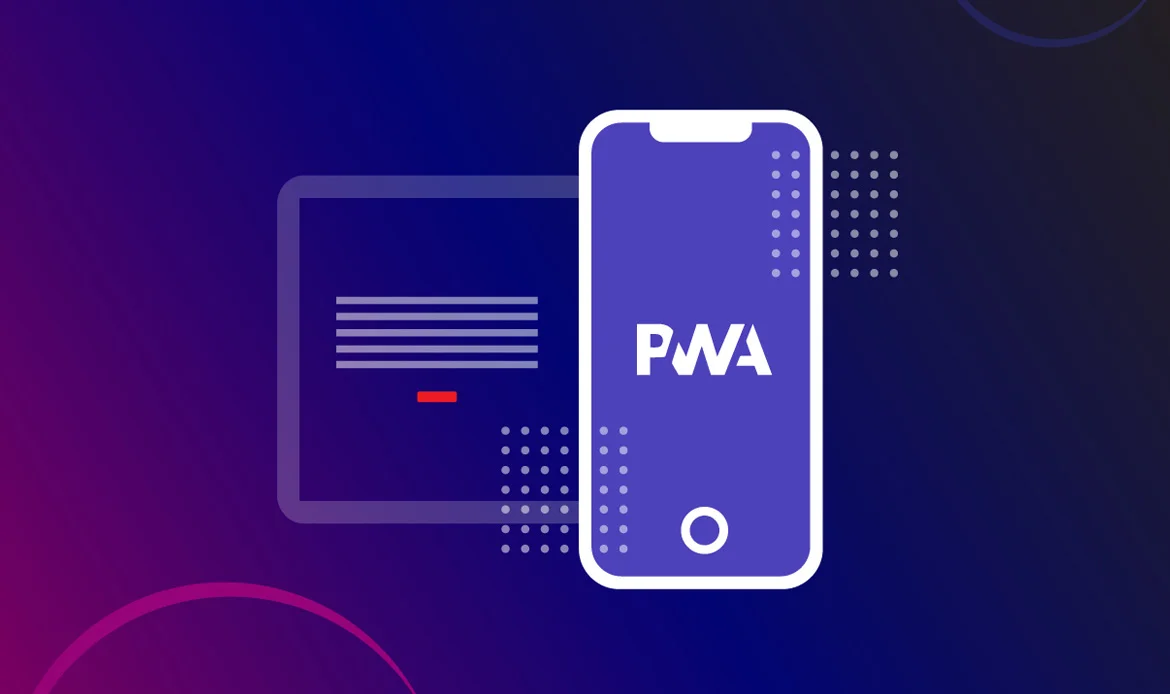 Building Progressive Web Apps (PWAs) is a highly valuable Web Developer Skills, especially in mobile-first markets like Mumbai, where users demand fast, reliable, and engaging digital experiences. PWAs combine the best of web and native applications by leveraging technologies such as service workers, web app manifests, and offline support. Mastery of PWAs allows developers to deliver seamless performance across devices and networks, ensuring users stay connected and engaged—even in low-connectivity environments.
Building Progressive Web Apps (PWAs) is a highly valuable Web Developer Skills, especially in mobile-first markets like Mumbai, where users demand fast, reliable, and engaging digital experiences. PWAs combine the best of web and native applications by leveraging technologies such as service workers, web app manifests, and offline support. Mastery of PWAs allows developers to deliver seamless performance across devices and networks, ensuring users stay connected and engaged—even in low-connectivity environments.
Service Workers
Service workers are JavaScript scripts that run in the background and intercept network requests from web pages. They allow developers to cache assets, pre-fetch content, and provide offline support, enabling PWAs to work reliably even in unreliable network conditions.Web App Manifests
Web app manifests are JSON files that provide metadata about a PWA, including its name, icons, colors, and display preferences. They allow developers to customize how the PWA appears and behaves when installed on a user’s device, providing a more native app-like experience.Offline Support
Offline support is essential for PWAs to work reliably even when the user is offline or on a slow or unreliable network. By caching assets and data locally, PWAs can continue to function seamlessly, providing a better user experience and improving user engagement and retention.6. Version Control/Git
Version control is essential for collaborative development and managing codebase changes effectively. Git is the most widely used version control system, and proficiency in Git, along with platforms like GitHub or GitLab, is a must-have skill for web developers in 2025.Git
Git is a distributed version control system that allows developers to track changes to their codebase, collaborate with team members, and manage codebase branches and merges effectively. Knowledge of Git commands, including git init, git add, git commit, git push, git pull, git merge, and git rebase, is essential for web developers.GitHub/GitLab
GitHub and GitLab are popular code hosting platforms that provide Git repository hosting, collaboration tools, and project management features. They allow developers to host their codebase, collaborate with team members, manage issues and pull requests, and automate CI/CD pipelines, making it easy to build, test, and deploy web applications. By mastering these essential skills, web developers can build high-quality and reliable web applications that meet the needs and expectations of their users in 2025 and beyond.7. DevOps and Deployment
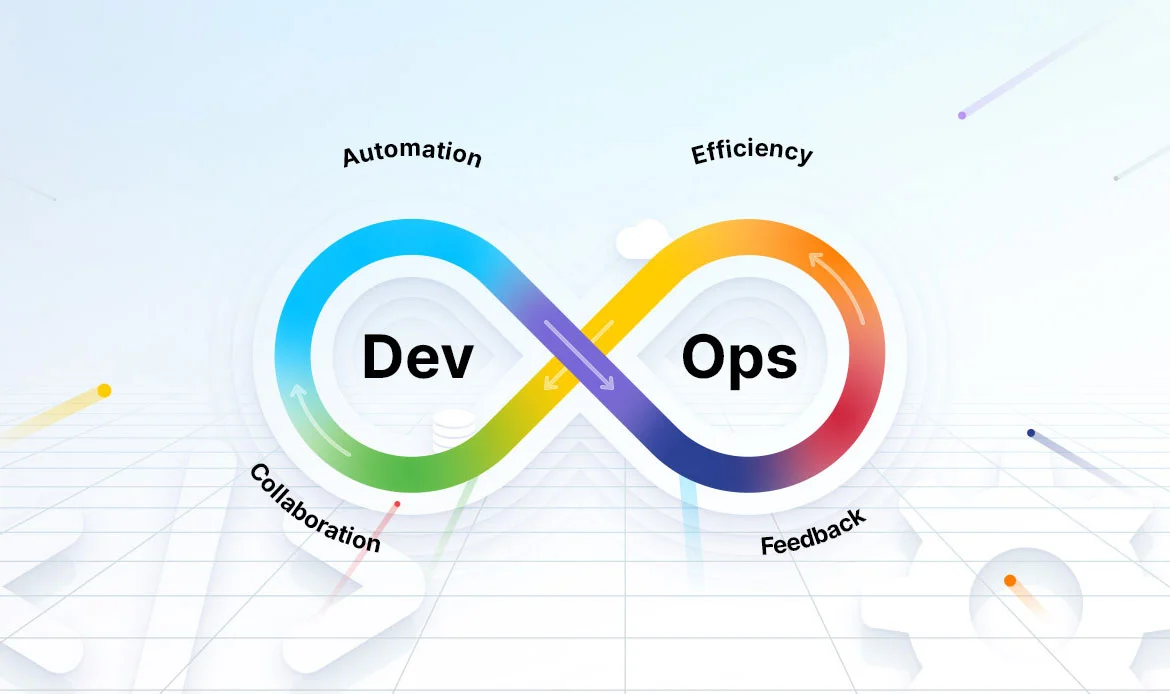 In modern web development, knowledge of DevOps practices and deployment tools has become a crucial Web Developer Skills. DevOps combines software development (Dev) and IT operations (Ops) to shorten the development life cycle and enable continuous delivery with high-quality software. Proficiency in DevOps tools allows developers to automate deployment, increase release frequency, and enhance collaboration between development and operations teams.
In modern web development, knowledge of DevOps practices and deployment tools has become a crucial Web Developer Skills. DevOps combines software development (Dev) and IT operations (Ops) to shorten the development life cycle and enable continuous delivery with high-quality software. Proficiency in DevOps tools allows developers to automate deployment, increase release frequency, and enhance collaboration between development and operations teams.
Docker:
is a powerful Web Developer Skills widely adopted in tech ecosystems like Berlin, where scalable and portable solutions are in high demand. It allows developers to package applications and their dependencies into lightweight containers that are portable, isolated, and efficient.Continuous Integration/Continuous Deployment (CI/CD) Pipelines:
CI/CD pipelines automate the process of building, testing, and deploying code changes to production environments. They allow developers to detect and fix bugs earlier in the development process, increase code quality, and release new features more frequently and reliably.Cloud Platforms (AWS, Azure, GCP):
Cloud platforms like Amazon Web Services (AWS), Microsoft Azure, and Google Cloud Platform (GCP) provide on-demand access to a wide range of computing resources, including virtual servers, storage, databases, and networking services.8. Security
With the increasing frequency of cyber-attacks, web developers must prioritize security. Understanding common web security vulnerabilities like cross-site scripting (XSS), SQL injection, and cross-site request forgery (CSRF), as well as techniques to mitigate these risks, is essential. Proficiency in web security best practices, including input validation, output encoding, authentication, and authorization mechanisms, is essential for building secure web applications.Common Web Security Vulnerabilities:
Understanding common web security vulnerabilities like XSS, SQL injection, CSRF, and insecure direct object references (IDOR) is essential for web developers. These vulnerabilities can allow attackers to steal sensitive data, compromise user accounts, or take control of web applications. Knowledge of how these vulnerabilities work and how to mitigate them is essential for building secure web applications.Secure Coding Practices:
Secure coding is a critical Web Developer Skills for professionals in leading tech hubs like New York, where data protection and cyber resilience are top priorities. By practicing input validation, output encoding, and parameterized queries, developers can safeguard applications from common security vulnerabilities. Input validation ensures that user data is safe and reliable, output encoding prevents malicious scripts from being injected, and parameterized queries protect against SQL injection by treating user input strictly as data. Together, these practices form the backbone of building secure, trustworthy web applications.Authentication and Authorization Mechanisms:
Authentication and authorization mechanisms, such as passwords, multi-factor authentication (MFA), and role-based access control (RBAC), help prevent unauthorized access to web applications. Password policies, including password complexity requirements and password hashing, help protect user accounts from being compromised.9. SEO and Performance Optimization
 SEO and performance optimization are indispensable Web Developer Skills, particularly in competitive digital markets like New York, where businesses rely on high search visibility and fast-loading websites to succeed. A strong understanding of SEO principles—such as keyword optimization, meta tags, and structured data—helps improve a website’s ranking in search results. At the same time, optimizing performance by minimizing loading times, reducing page size, and leveraging caching ensures an excellent user experience. Together, these skills empower developers to build websites that attract traffic, engage users, and drive conversions.
SEO and performance optimization are indispensable Web Developer Skills, particularly in competitive digital markets like New York, where businesses rely on high search visibility and fast-loading websites to succeed. A strong understanding of SEO principles—such as keyword optimization, meta tags, and structured data—helps improve a website’s ranking in search results. At the same time, optimizing performance by minimizing loading times, reducing page size, and leveraging caching ensures an excellent user experience. Together, these skills empower developers to build websites that attract traffic, engage users, and drive conversions.
Search Engine Optimization (SEO):
SEO involves optimizing web content to improve its visibility and ranking in search engine results. This includes keyword research, on-page optimization (e.g., title tags, meta descriptions, headings), off-page optimization (e.g., backlinks, social signals), and technical optimization (e.g., site speed, mobile-friendliness, site structure). Knowledge of SEO best practices and tools like Google Analytics, Google Search Console, and SEO plugins is essential for web developers.Website Performance Optimization:
Website performance optimization involves improving loading times, reducing page size, and minimizing resource requests to provide a better user experience. This includes techniques like image optimization, minification and compression of CSS and JavaScript files, lazy loading of images and resources, and leveraging browser caching and CDNs (Content Delivery Networks). Knowledge of performance optimization best practices and tools like Lighthouse, PageSpeed Insights, and WebPageTest is essential for web developers.10. AI and Machine Learning
While not traditionally seen as a core requirement, AI and machine learning are rapidly emerging as vital Web Developer Skills, especially in innovation-driven cities like Toronto, where businesses prioritize smart, user-focused solutions. By integrating AI-powered features such as chatbots, recommendation engines, and personalized content, developers can greatly enhance user experience and engagement. Mastering these technologies allows web developers to stay ahead of the curve, creating intelligent, adaptive applications that meet the evolving demands of modern users.Chatbots
Chatbots are AI-powered conversational interfaces that can interact with users in natural language. They can help automate customer support, answer frequently asked questions, and guide users through complex tasks.Recommendation Engines
Recommendation engines use machine learning algorithms to analyze user behavior and preferences and provide personalized recommendations. They can help users discover new products, content, or services based on their past interactions and preferences.Personalized Content
Personalized content is becoming an essential Web Developer Skills, especially in digital-first markets like London, where user experience directly impacts brand success.11. Accessibility
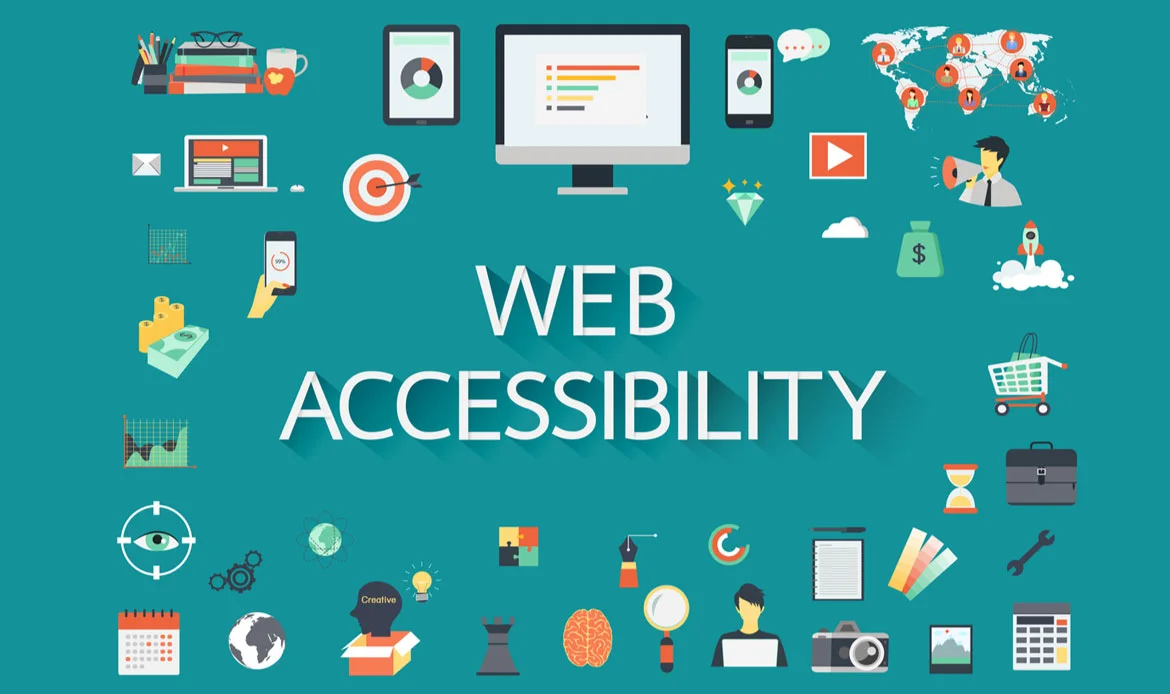 Web accessibility is a critical Web Developer Skills, particularly in regions like Sydney, where inclusive design and compliance with accessibility laws are strongly emphasized. By following accessibility standards such as WCAG, developers can ensure that websites and web applications are usable by people with disabilities. Implementing best practices—like providing alternative text for images, ensuring keyboard navigation, and using semantic HTML—not only fulfills legal obligations but also creates a more inclusive and user-friendly web experience for everyone.
Web accessibility is a critical Web Developer Skills, particularly in regions like Sydney, where inclusive design and compliance with accessibility laws are strongly emphasized. By following accessibility standards such as WCAG, developers can ensure that websites and web applications are usable by people with disabilities. Implementing best practices—like providing alternative text for images, ensuring keyboard navigation, and using semantic HTML—not only fulfills legal obligations but also creates a more inclusive and user-friendly web experience for everyone.
Web Content Accessibility Guidelines (WCAG)
WCAG is a set of guidelines developed by the World Wide Web Consortium (W3C) to ensure that web content is accessible to people with disabilities. WCAG covers a wide range of accessibility issues, including keyboard navigation, screen reader compatibility, alternative text for images, color contrast, and semantic HTML markup. Understanding WCAG guidelines and implementing them in web development projects is essential for ensuring accessibility.Semantic HTML
Semantic HTML markup ensures that web content is structured in a meaningful and accessible way. This includes using appropriate HTML elements to structure the content, providing alternative text for images and other non-text content, and using HTML5 features like landmarks and ARIA roles to improve accessibility for assistive technologies like screen readers.Keyboard Navigation
Keyboard navigation is essential for users who cannot use a mouse or other pointing device. Web developers should ensure that all interactive elements on a web page are accessible via keyboard navigation, using techniques like tabindex, focus styles, and skip navigation links to make keyboard navigation more efficient and intuitive.Screen Reader Compatibility
Ensuring screen reader compatibility is a vital Web Developer Skills, particularly in inclusive design-focused regions like Toronto, where accessibility standards are highly emphasized. Screen readers convert text and other digital content into speech or braille for users with visual impairments, making accessibility a top priority.12. Mobile Development
As mobile usage continues to grow, mastering mobile development principles has become an essential Web Developer Skills. Responsive design is just the beginning; knowledge of mobile-specific frameworks like React Native or Ionic empowers developers to build cross-platform mobile applications using web technologies, ensuring seamless user experiences across devices.Responsive Design
Responsive design ensures that websites and web applications adapt to different screen sizes and devices, providing a consistent and optimized user experience across desktops, tablets, and smartphones. Responsive design techniques include fluid layouts, flexible images, and media queries to adjust the layout and styling based on the screen size and device orientation.Mobile-first Design
Mobile-first design is a design approach that prioritizes mobile users’ needs and preferences when designing websites and web applications. By starting with the smallest screen size and progressively enhancing the design for larger screens, mobile-first design ensures that web content is accessible and usable on mobile devices, where space and bandwidth are limited.Progressive Web Apps (PWAs)
PWAs are web applications that provide a native app-like experience within a web browser. They use modern web technologies like service workers, web app manifests, and offline support to deliver fast, reliable, and engaging user experiences on mobile devices. By leveraging PWAs, web developers can build cross-platform mobile applications using web technologies like HTML, CSS, and JavaScript.React Native
React Native is a mobile development framework that allows developers to build cross-platform mobile applications using React, a popular JavaScript library for building user interfaces. React Native applications are written in JavaScript and can be compiled to native code for iOS and Android, allowing developers to reuse code and skills across different platforms.Ionic
Ionic is a mobile development framework that allows developers to build cross-platform mobile applications using web technologies like HTML, CSS, and JavaScript. Ionic applications are built using web components and can be deployed as native apps on iOS and Android devices, as well as progressive web apps (PWAs) in web browsers.13. Data Visualization
 Data visualization is an increasingly important Web Developer Skills, especially in innovation-driven cities like Singapore, where businesses rely heavily on data-driven insights. By using libraries such as D3.js or Chart.js, developers can transform complex datasets into interactive, visually appealing graphics that are easy to understand. These visualizations not only enhance user engagement but also improve decision-making by presenting information in a clear and impactful way.
Data visualization is an increasingly important Web Developer Skills, especially in innovation-driven cities like Singapore, where businesses rely heavily on data-driven insights. By using libraries such as D3.js or Chart.js, developers can transform complex datasets into interactive, visually appealing graphics that are easy to understand. These visualizations not only enhance user engagement but also improve decision-making by presenting information in a clear and impactful way.
D3.js
D3.js (Data-Driven Documents) is a JavaScript library for creating interactive and dynamic data visualizations in web browsers. D3.js allows developers to bind data to HTML, SVG, and CSS elements and apply data-driven transformations to create a wide range of charts, graphs, and maps.Chart.js
Chart.js is a simple yet powerful JavaScript library for creating responsive and customizable charts and graphs in web browsers. Chart.js provides a wide range of chart types, including line charts, bar charts, pie charts, and radar charts, and supports features like animation, tooltips, and legends. With its easy-to-use API and built-in responsiveness, Chart.js is an excellent choice for adding data visualizations to web applications.Data Visualization Best Practices
Effective data visualization requires more than just choosing the right library; it also involves following best practices for designing clear, informative, and visually appealing visualizations.14. Blockchain Development
With the rise of blockchain technology, there is a growing demand for professionals who possess blockchain development expertise as a Web Developer Skills. Understanding blockchain fundamentals, smart contract development, and the integration of blockchain technology into web applications can unlock new opportunities across industries such as fintech, supply chain, and healthcare.Blockchain Fundamentals
is a distributed ledger technology that allows multiple parties to record and verify transactions in a secure and transparent manner. Understanding blockchain fundamentals, including how blocks are created, verified, and linked together, and how consensus is reached among network participants, is essential for blockchain development.Smart Contract Development
are self-executing contracts with the terms of the agreement between buyer and seller being directly written into code. They automatically execute transactions and enforce the terms of the contract without the need for intermediaries.Blockchain Integration
technology into web applications requires knowledge of blockchain APIs, SDKs, and protocols. This includes interacting with blockchain networks, querying and analyzing blockchain data, and integrating blockchain transactions into web applications using web3.js or similar libraries.15. Serverless Architecture in Modern Web Developer Skills
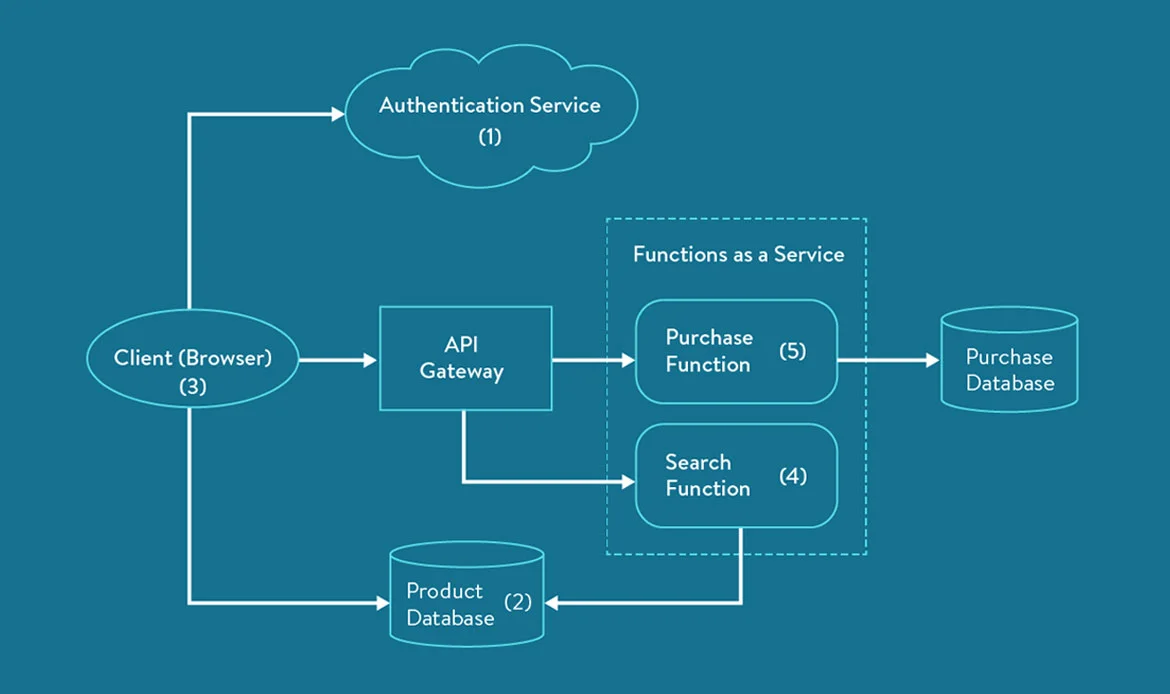 Serverless architecture is a game-changing Web Developer Skill, especially in cloud-focused regions like San Francisco, where scalability and efficiency are critical. Platforms such as AWS Lambda, Azure Functions, and Google Cloud Functions empower developers to build and deploy applications without managing servers directly. By mastering serverless architecture, web developers can streamline workflows, accelerate deployment, and significantly reduce infrastructure costs—allowing them to focus more on innovation and less on server maintenance.
Serverless architecture is a game-changing Web Developer Skill, especially in cloud-focused regions like San Francisco, where scalability and efficiency are critical. Platforms such as AWS Lambda, Azure Functions, and Google Cloud Functions empower developers to build and deploy applications without managing servers directly. By mastering serverless architecture, web developers can streamline workflows, accelerate deployment, and significantly reduce infrastructure costs—allowing them to focus more on innovation and less on server maintenance.
Serverless Architecture
By leveraging cloud services like AWS Lambda, Azure Functions, or Google Cloud Functions, developers can focus on writing code while the platform automatically handles scaling and resource management.AWS Lambda
It allows developers to run code in response to events triggered by AWS services or HTTP requests. With Lambda, developers can write code in languages like Node.js, Python, Java, or C#, and AWS takes care of provisioning and managing the underlying infrastructure.Azure Functions
Is a serverless compute service from Microsoft that allows web developers to run event-driven code without managing infrastructure. By writing small, single-purpose functions, developers can build scalable applications that respond to events, such as HTTP requests or database changesGoogle Cloud Functions
It supports multiple languages and integrates seamlessly with other Google Cloud services, allowing developers to build scalable and efficient applications. Mastering Google Cloud Functions is an essential part of web developer skills, empowering developers to create responsive, with minimal operational overhead.16. Microservices Architecture for Essential Web Developer Skills
Microservices architecture involves breaking down large applications into smaller, independent services that can be developed, deployed, and scaled independently. Mastering this Web Developer Skill, along with containerization technologies like Docker and orchestration tools such as Kubernetes, is highly valuable for building scalable and resilient web applications in today’s fast-paced development environment.Microservices Architecture
Microservices architecture is an architectural style that structures an application as a collection of loosely coupled services. Each service is responsible for a specific business function and can be developed, deployed, and scaled independently.Benefits of Microservices
Microservices offer several benefits over traditional monolithic architectures, including improved scalability, resilience, and flexibility. By breaking down large applications into smaller services, developers can iterate and deploy changes more quickly, scale individual services independently, and isolate failures to prevent them from affecting other parts of the system.17. WebAssembly (Wasm) Skills for Modern Web Developer Skills
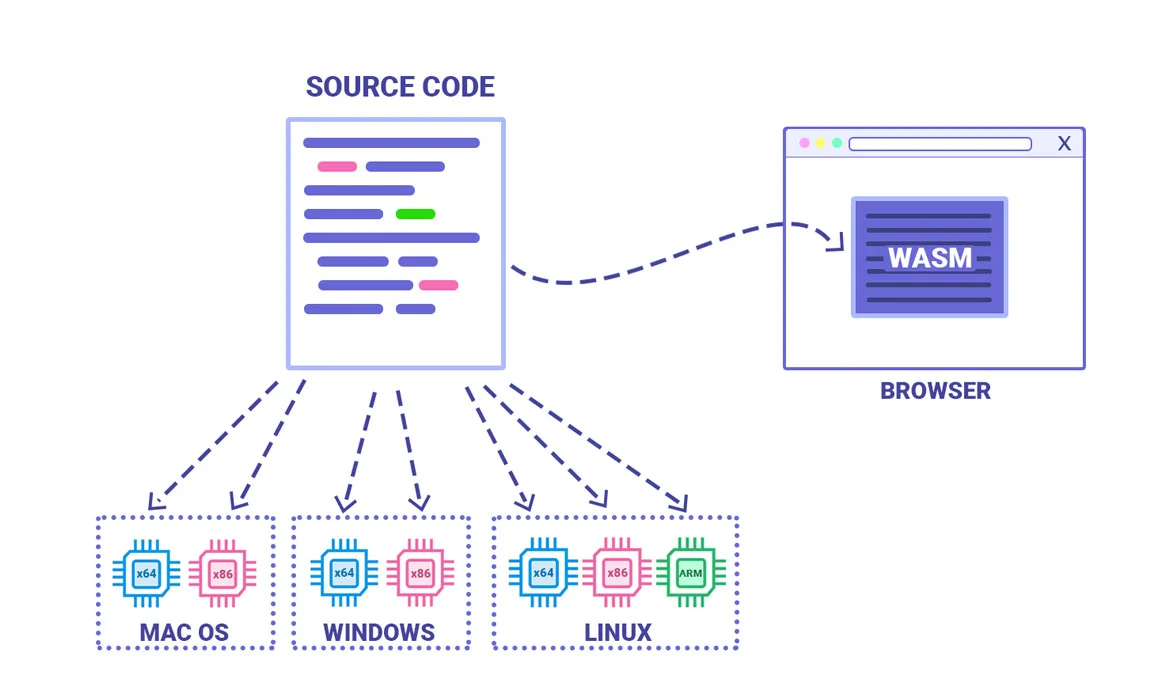 WebAssembly is a binary instruction format that enables high-performance execution of code on web browsers. With WebAssembly, developers can write performance-critical code in languages like C, C++, or Rust and run them in web browsers at near-native speeds. Understanding WebAssembly and its integration with web applications can unlock new possibilities for performance optimization and code reuse.
WebAssembly is a binary instruction format that enables high-performance execution of code on web browsers. With WebAssembly, developers can write performance-critical code in languages like C, C++, or Rust and run them in web browsers at near-native speeds. Understanding WebAssembly and its integration with web applications can unlock new possibilities for performance optimization and code reuse.
WebAssembly (Wasm) is a low-level binary instruction format that provides a compact, efficient, and secure way to run code in web browsers. It allows developers to compile code written in languages like C, C++, or Rust to a binary format that can be executed at near-native speeds in web browsers. WebAssembly is supported by all major web browsers, including Chrome, Firefox, Safari, and Edge.
Benefits of WebAssembly offers several benefits over traditional web development technologies, including improved performance, portability, and security. By compiling code to a binary format, WebAssembly allows developers to run performance-critical code in web browsers at near-native speeds, making it ideal for CPU-intensive tasks like gaming, multimedia, and virtual reality.
Use Cases for WebAssembly can be used for a wide range of use cases, including gaming, multimedia, virtual reality, and scientific computing. It allows developers to run existing code written in languages like C, C++, or Rust in web browsers, enabling code reuse and interoperability between different platforms. WebAssembly can also be used to optimize performance-critical parts of web applications, improving overall performance and user experience.
18. Continuous Learning and Adaptation for Essential Web Developer Skills
The web development landscape is constantly evolving, with new technologies, frameworks, and best practices emerging regularly. To stay relevant, mastering each Web Developer Skill requires a commitment to continuous learning and adaptation. Engaging with online communities, attending conferences and workshops, and exploring new technologies and trends are essential for keeping skills up-to-date in 2025 and beyond.
Online Communities Online communities like Stack Overflow, Reddit, and GitHub are valuable resources for web developers to learn, share knowledge, and collaborate with peers. Participating in online communities allows developers to ask questions, share insights, and stay up-to-date with the latest trends and technologies in web development.
Conferences and Workshops Conferences and workshops are excellent opportunities for web developers to learn from industry experts, network with peers, and stay up-to-date with the latest trends and technologies in web development. Many conferences and workshops offer hands-on training, technical sessions, and networking opportunities, making them valuable resources for professional development.
Exploring New Technologies and Trends: Web development is a fast-paced and constantly evolving field, with new technologies, frameworks, and best practices emerging regularly. To stay relevant, web developers must commit to exploring new technologies and trends, experimenting with new tools and techniques, and continuously expanding their skill set.
19. Customer Relationship Management (CRM) Integration as a Key Web Developer Skill

Many web applications require integration with CRM systems to manage customer data effectively. Knowledge of popular CRM platforms like Salesforce, HubSpot, or Zoho, as well as the ability to integrate web applications with these platforms using APIs, is essential for many web development projects.
Salesforce Salesforce is a leading CRM platform that helps businesses manage customer relationships, sales, and marketing. It provides a wide range of features and services, including customer data management, sales automation, marketing automation, and customer service. Integrating web applications with Salesforce allows businesses to streamline their sales and marketing processes, improve customer engagement, and drive revenue growth.
HubSpot HubSpot is an all-in-one marketing, sales, and customer service platform that helps businesses attract, engage, and delight customers. It provides a wide range of features and services, including CRM, marketing automation, sales automation, and customer service. Integrating web applications with HubSpot allows businesses to centralize customer data, automate marketing and sales processes, and deliver personalized experiences to customers.
Zoho CRM Zoho CRM integration is an increasingly valuable Web Developer Skill, particularly in business-driven cities like Dubai, where companies focus heavily on customer engagement and sales growth. Zoho CRM, a cloud-based platform, offers robust features such as lead management, contact management, sales automation, and marketing automation. By integrating web applications with Zoho CRM, developers can help businesses streamline workflows, enhance customer interactions, and ultimately boost revenue through smarter sales and marketing processes.
20. Frontend Testing and Quality Assurance: Essential Web Developer Skills
Frontend testing and quality assurance are crucial Web Developer Skills, especially in tech-forward cities like Tokyo, where user experience and performance standards are exceptionally high. Mastery of testing frameworks such as Jest, Mocha, or Cypress enables developers to validate functionality, catch bugs early, and optimize performance. Combining these tools with methodologies like unit testing, integration testing, and end-to-end testing ensures that web applications run smoothly, meet business requirements, and deliver a seamless user experience across devices.
Jest: is a popular JavaScript testing framework developed by Facebook. It provides a simple and intuitive API for writing unit tests, integration tests, and end-to-end tests for JavaScript code. Jest is well-suited for testing React applications, with built-in support for features like snapshot testing, mocking, and code coverage analysis.
Mocha: is a flexible JavaScript testing framework that runs on Node.js and in the browser. It provides a simple and extensible API for writing unit tests, integration tests, and end-to-end tests for JavaScript code. Mocha is highly configurable and supports a wide range of testing styles and methodologies, making it a popular choice for testing JavaScript applications.
Cypress n today’s competitive digital landscape, mastering Cypress is becoming an essential Web Developer Skill for those aiming to excel in testing and quality assurance. For instance, many tech companies in Bangalore, India, widely adopt Cypress for end-to-end testing of web applications due to its modern JavaScript foundation and ease of integration.
1. Which programming languages should I learn to stay relevant?
JavaScript and Python remain essentials, but TypeScript, Go, and Rust are gaining popularity for modern projects, giving developers a competitive edge.
2. Will AI take over web development?
AI tools enhance productivity by handling repetitive tasks, but they cannot replace the creativity, logic, and design sense a human developer brings.
3. Is a college degree still necessary for web developers?
Not always. Employers often value hands-on experience, personal projects, and certifications more than formal education.
4. How crucial is cybersecurity knowledge?
With growing cyberattacks, secure coding and ethical hacking are must-have skills for every developer in 2025.
5. What soft skills will employers look for the most?
Adaptability, problem-solving, and collaboration top the list—because teamwork and learning agility are just as vital as coding expertise.
Final Thoughts
In conclusion, the field of web development is evolving rapidly, and staying ahead requires continuous learning and adaptation. By mastering the top Web Developer Skills outlined in this article—ranging from AI integration to accessibility, testing frameworks, and cross-browser compatibility—you can position yourself for long-term success in 2025 and beyond. From proficiency in programming languages and responsive design to knowledge of emerging technologies like serverless architecture and blockchain development, these skills will help you build high-quality, innovative web applications that meet the needs of today’s users. Whether you’re a seasoned web developer or just starting your journey, investing in these skills will ensure that you remain competitive and continue to thrive in the dynamic world of web development.Take Charge of Your Future in Web Development
Empower your career or business with the latest WordPress themes designed for the modern web developer. Stay ahead of the competition with SEO-optimized, responsive, and high-performance designs that simplify development and elevate user experience.


